Artificial intelligence (AI) is a computer’s ability to do tasks we usually need brains for, like thinking, learning, making choices, and solving problems. AI is a big deal in computer science. We use it in many areas like healthcare, schools, fun stuff, business, and security.
Developing AI software isn’t an easy job. It needs a lot of knowledge, skills, tools, and best practices. In this article, we’ll look at how to build AI software with OpenAI’s APIs. These tools are powerful and easy to use. They let people create and start-up AI apps. We’ll also check out the advantages, challenges, and the future of making AI software with OpenAI’s APIs.
What Is Artificial Intelligence?
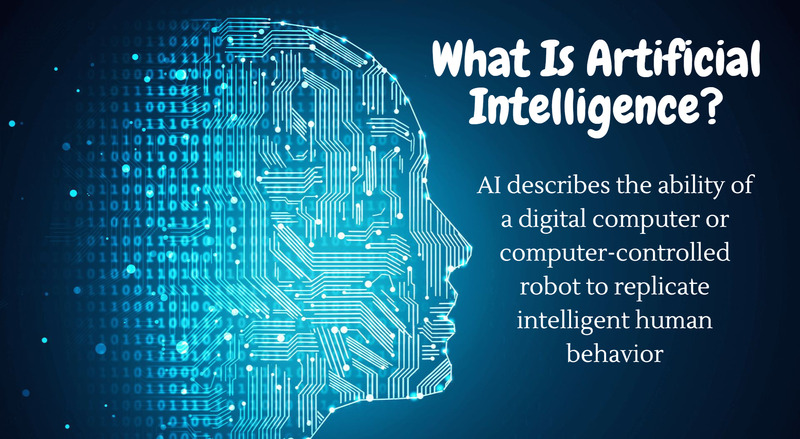
Artificial intelligence refers to the capability of a computer or robot to imitate intelligent human behavior. It is a field within computer science. Examples of AI development include voice assistants such as Siri and Alexa, self-driving cars, chatbots, and email spam filters.
According to information theory, intelligence can be defined as the capacity to receive and retain information. The principles and aspects that affect the transmission and process of data are mathematically represented in information theory.
Co-founder of DeepMind Technologies, Shane Legg, believes intelligence involves an agent’s capacity to plan for the future and adapt to new opportunities. When this agent is a person, we refer to it as natural intelligence. However, when the agent is a machine, it is called artificial intelligence.
How to Develop AI Software? Best Guide
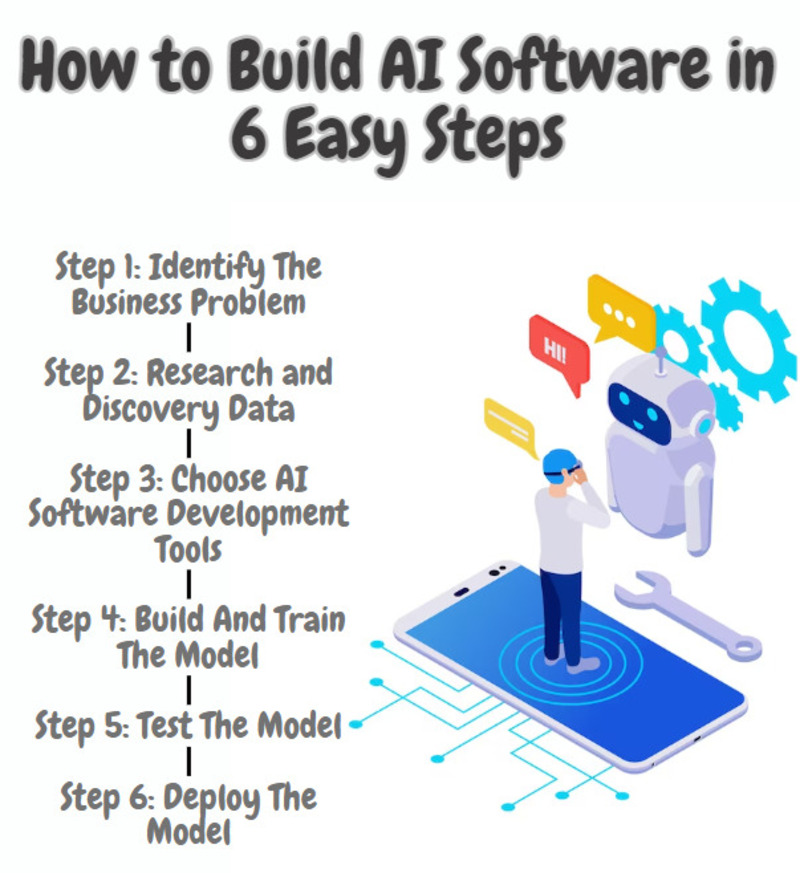
Step 1: Identify The Business Problem

The first step when creating AI is identifying a problem it can handle. This may be an issue with increasing productivity or quality of decision-making or with automating specific tasks. To ensure the success of an AI system, it is crucial to define the issue at hand and outline its objectives clearly.
Step 2: Research and Discovery Data
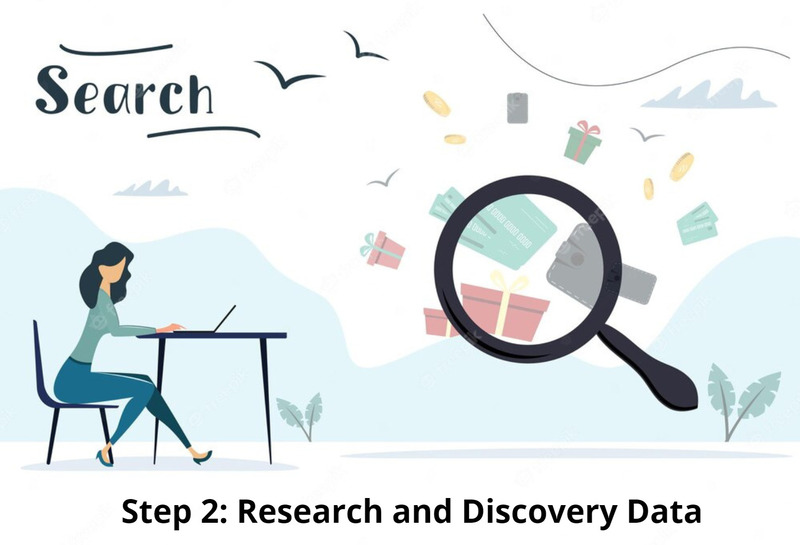
Having accurate information to train your AI is essential since algorithms are only as good as the data they were developed with. To define it, make sure it matches the ideas below.
- The information is relevant to the issue you’re trying to resolve.
- There is enough information to depict all outcomes and situations accurately.
- There is no bias in the data.
Data that is well-defined and has uncomplicated search parameters, like a spreadsheet, is considered structured data. Unstructured data, conversely, is difficult to understand because of its complexity; this includes things like conversation transcripts.
Data is seldom organized. In most cases, we need to clean and organize it in advance. AI operates on the same approach. Cleaning the data is getting it ready for use by sorting it, removing duplicates, and categorizing it.
Step 3: Choose AI Software Development Tools
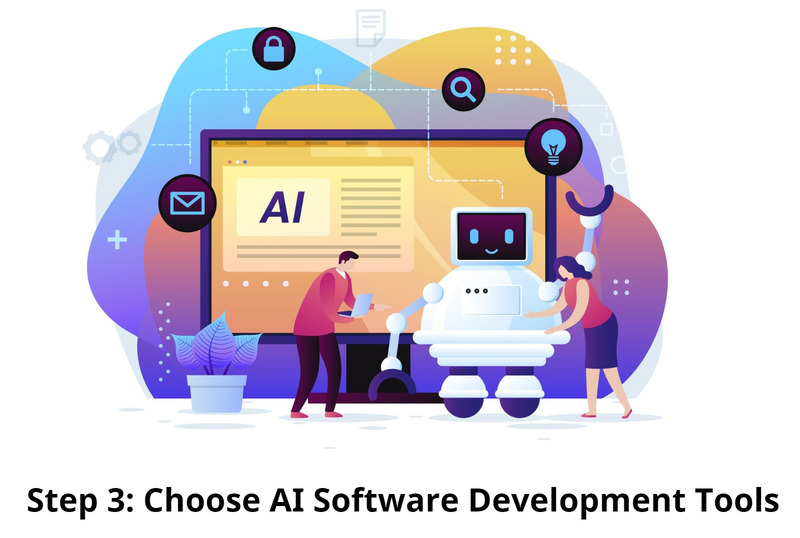
With the information in hand, you can carefully select the most suitable artificial intelligence technology for your needs. AI encompasses a diverse array of technologies, spanning from machine learning, voice recognition, and natural language processing to augmented reality and more.
To avoid falling for AI advertising, basing your evaluation of available solutions on your actual needs is important. Pick a method with helpful documentation and support to receive answers quickly if you run into trouble.
Step 4: Build And Train The Model
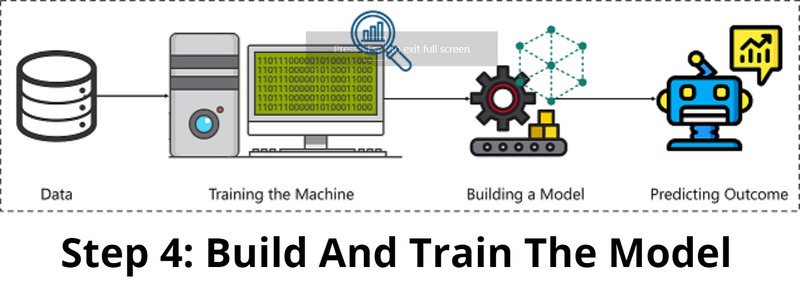
When specifying computer requirements, it is essential to determine the method that will be used for executing these commands. In this case, computer algorithms can be employed to assist. Algorithms are mathematical instructions that play a crucial role in enabling AI models to learn from datasets. It is imperative to develop prediction or classification machine learning algorithms to facilitate learning.
After collecting sufficient data, the next stage in AI development involves training the algorithm. It is important to optimize the algorithm during this process to achieve a highly accurate AI model. However, you might require additional data to enhance the accuracy of your model further.
The most important stage is to ensure model accuracy. As a result, a threshold of acceptable model accuracy must be set. A social media platform may identify and remove potentially fraudulent entries by assigning a “fraud score” between 0 and 1 to each account. Research may lead to the conclusion that all accounts with a score of 0.9 or above should be sent to the fraud team.
Step 5: Test The Model
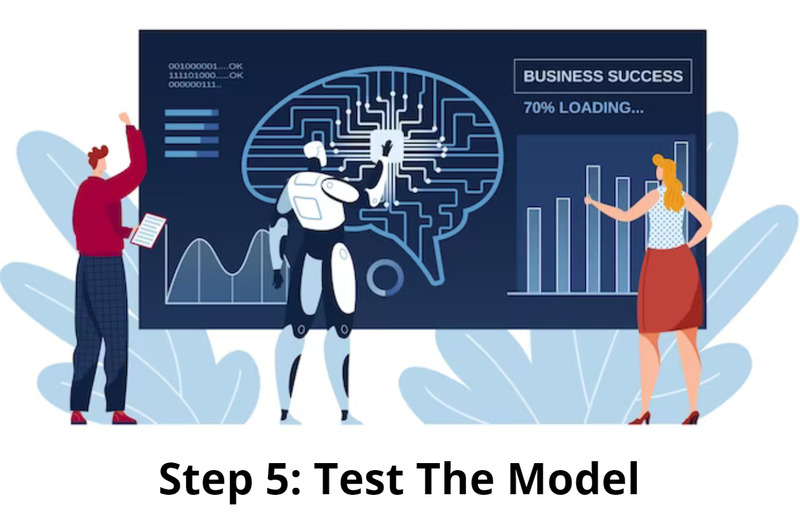
Continuous testing is crucial for ML models, just like rigorous testing is essential for software. ML models have the ability to incorporate new information in real-time, without any human input. However, this can lead to bias and data loss if not reviewed frequently.
Step 6: Deploy The Model
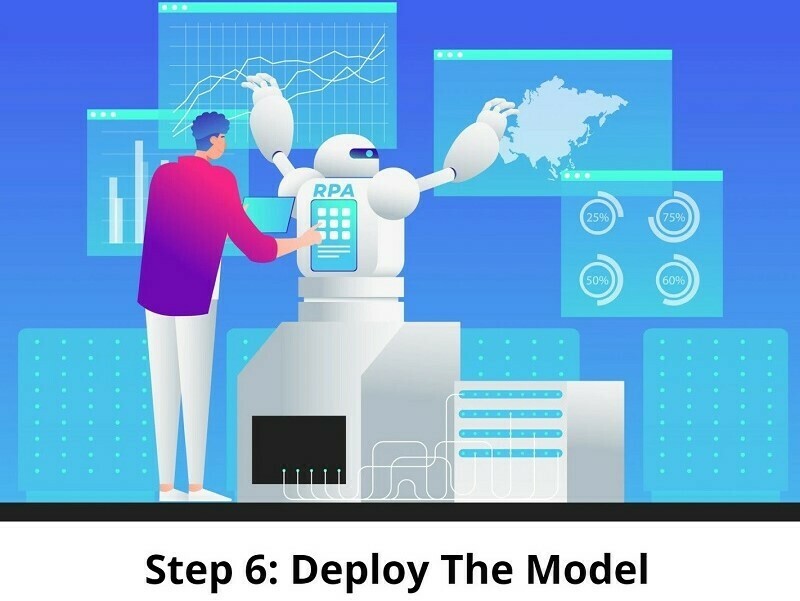
During this stage, developers utilize machine learning models to build AI programs. Incorporating Agile into the software development life cycle can be advantageous for high-risk artificial intelligence projects as it helps manage risks effectively throughout the development process. In particular, the AI team should employ MLOps.
MLOps is a valuable tool for software development teams to incorporate ML models into their workflow. It is an extension of DevOps, which is a strategy that improves software quality through continuous feedback between operations and development.
MLOps allows for an integrated workflow that brings together the AI software team and operations by connecting software, hardware, and IT support. Artificial intelligence software development can greatly benefit from this approach, as it breaks down the barriers between different departments.
Read more: Artificial Intelligence In Healthcare: Use Cases and Upcoming Trends (2023)
The Future Of AI Software Development
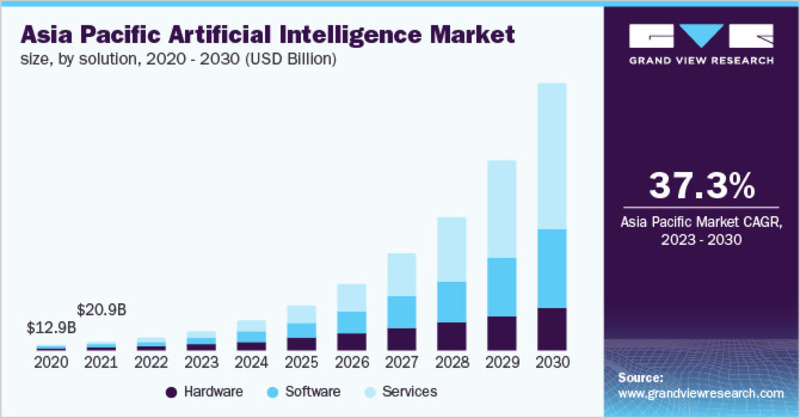
The global AI industry is valued at $136.55 billion in 2022 and is projected to witness a compound annual growth rate (CAGR) of 37.3% from 2023 to 2030 (Source: grandviewresearch.com)
Artificial intelligence already has a substantial impact on our daily lives and work environments. This influence is expected to expand significantly in the near future. By 2030, as projected by Grand View Research, the global artificial intelligence market is estimated to reach a value of $811 billion. Notably, the healthcare and financial sectors are foreseen as major facilitators of AI integration over the upcoming years.
Robust progress is being witnessed in artificial intelligence, particularly in machine learning, natural language processing, and computer vision. Anticipate the emergence of increasingly sophisticated AI software as we confront more intricate problems.
Read more: Artificial Intelligence in Robotics: Top 6 Use Cases and Future (2023)
We hope you now can understand “how to develop AI software.” To wrap it up, using OpenAI’s APIs to build and start AI apps is a feasible and beneficial choice. OpenAI’s APIs dish out a spectrum of services that encompass diverse AI development zones – like understanding human language, computer vision, generative models, reinforcement learning, and neural networks. Leveraging OpenAI’s APIs lets developers save time, money, and effort, getting them to cutting-edge AI models and techniques.
Developing AI software using OpenAI’s APIs poses various challenges, including ethical concerns, security risks, technical limitations, and social implications. It is crucial for developers to understand these challenges and implement measures to guarantee quality, safety, and responsibility in their AI software. This field holds enormous possibilities to transform businesses and areas in the approaching years, becoming a vibrant and hopeful development zone.


